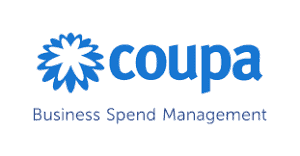Compiling a business case for Sustainability and Energy reporting software to be put to a board or financial director can be challenging to quantify and articulate. So to help you stop your plans from becoming overgrown and smothered, we have compiled this document, which outlines some of the key components to consider when compiling and calculating the business case.
The Growth of Sustainability Reporting
Sustainability, Carbon, and Energy Reporting have evolved significantly over the past 10 years and is now far more complicated and demanding. When asked for a business case to adopt sustainability software to help with these increased complexities, these new requirements make it a challenge for sustainability professionals is to explain to a financial controller or board why they suddenly need a system. The answer is clear to people in the sector, but it’s not so obvious to others. Often the response involves the following five answers:
- Reporting Complexity: In the early years, reporting methodologies were much less complex. Now, reports needed to be fit for purpose for customers, shareholders, legislators, auditors, carbon budgeting, and management for performance analysis.
- Increased reporting demands: At inception, it was normal to have one report per year. Now quarterly reporting is the norm, with the trend moving towards monthly performance reporting.
- Increasingly specific emission factors: There used to be just one main set of emissions factors. However, each country and energy supplier has its own set—each needs to be used in symphony with others.
- A higher investor focuses on such non-financial data: In the past, it was acceptable to release top-line numbers to the investment community and voluntary investor-led communities such as the CDP. However, these reports are under incredible scrutiny, and drill-down capability by a company entity, division, state, country and source are now the norm.
- New legislation demanding financial grade audit controls and process management: Since 2014 the mandatory carbon reporting legislation required companies listed on some exchanges to report their Greenhouse gas emissions. In December 2016, this expanded in Europe to cover any company with 500 employees or more under the EU-Non-Financial Reporting directive. Both carry fines and penalties for non-compliance. While the United States has fewer mandatory reporting requirements and penalties than Europe, the investor community is driving the requirement for additional accurate, auditable information to help with performance evaluations and insights not available from financial reports.
Board Level Concerns:
- Improved Investor Data Controls:
- Following the arrival of mandatory carbon reporting in many countries, board members have been inquiring about the Greenhouse Gas Emission data’s origin and reliability, which
 now features in the company’s annual report. The board is often surprised to learn that proper controls and systems are not in place for this kind of data, demonstrating robust controls and auditability. There is a duty of skill and care upon the board to provide proper systems and tools to its sustainability management teams to ensure the risk of human error is reduced or eliminated. Now, this was perhaps the single most common driver to new system adoption.
now features in the company’s annual report. The board is often surprised to learn that proper controls and systems are not in place for this kind of data, demonstrating robust controls and auditability. There is a duty of skill and care upon the board to provide proper systems and tools to its sustainability management teams to ensure the risk of human error is reduced or eliminated. Now, this was perhaps the single most common driver to new system adoption.
- Following the arrival of mandatory carbon reporting in many countries, board members have been inquiring about the Greenhouse Gas Emission data’s origin and reliability, which
- Public Disclosure Inaccuracies
- In 2011 Dell infamously misreported its Carbon footprint due to spreadsheet error, and the share price dropped by over 5% following the Wall Street Journal’s exposure. While these revelations themselves are not the source of market concern, it throws other annual reports’ accuracy into doubt as investors question the robustness of systems and processes in place for corporate reporting. The finance team wouldn’t be expected to prepare the financial statements using just MS Excel, so why do we expect the sustainability team?
- Market and Competitive Trends
- Increasingly sales teams are asked by their biggest customers for incredibly detailed data regarding the greenhouse gas emissions and carbon footprint performance of the organization as part of the procurement process. In short, if your competitors have this data easily generated for sales bids, then you are immediately behind the competition. Besides competitive sales bids, the CDP, FTSE4Good, DJSI, and other global reporting initiatives are increasingly used to assess how efficiently an organization is being run. These wide-ranging indicators have proven to be a very insightful view of a company’s non-financial performance. It removes market influences and gives a good indication of future financial performance.
- Board Level Concerns Conclusion:
- While the non-financial business case in this regard is easy to justify, the financial is a little more subjective. We have observed one approach to consider a 10% error rate, compound that over 3-5 years, and consider the impact financially to the business in terms of increased auditor costs, penalties, lost business, and poor media coverage.
Risk Mitigation
- Key Person Dependence
- Most organizations have a single person who is responsible for all sustainability, carbon, and energy reporting. This person has constructed or inherited the spreadsheets over the past number of years. Frustrated and de-motivated by the onerous reporting and data chasing, they have become “pigeon-holed,” and they can’t easily advance their careers internally. Their external career advancement prospects are also significantly impacted, as they have spent most of their time dealing with data instead of running energy and emissions reduction projects and initiatives. Unfortunately, this happens all too often, and it can be destructive to the organization and the individual personally. If the person goes on extended leave or is out sick, the organization suffers exponentially higher share value losses and costs than the cost of a sustainability software solution. Some regard software as an insurance policy in this regard. An easy-to-use software platform facilitates the delegation of sustainability management and provides an instant reporting platform to all concerned. This argument’s business case can be measured in financial terms by asking if we stopped reporting our sustainability for 12 months? What would it cost the business?
- Duty of Skill and Care
- With sustainability, carbon, and energy reports under incredible scrutiny by investors, the media, and customers, how confident are you that your existing system’s calculations and emissions factors are correct and up to date? Or how confident are you that “The Spreadsheet” has no calculation formula issues or incomplete calculations? A mild oversight by even the most diligent person can bring financial penalties. While there was a general acceptance that this data would have a certain level of risk – with the availability of systems such as Vervantis becoming accessible to companies of all sizes, there is a duty of skill and care upon management and professionals alike to ensure that these robust tools are utilized to lower results risk.
- Data Completeness & Anomalies
- In high-pressure situations when nothing but 100% accuracy is acceptable, even seasoned excel wizards can fall prey to an incomplete or out-of-date formula. Nothing beats the reassurance of a software system validating your data, both at the acquisition and visualization stages, for consistency and identifying any data anomalies that would otherwise go unnoticed. The reputational risk of error is severe.
- Risk Conclusion:
- Similarly, to Board Level Concerns, in the context of a financially calculated business case, Risk is a subjective topic. However, the cost of failure is easier to calculate based on a modest 10% failure rate over a 3-5-year period compounded. Additionally, over the years, Vervantis’s solution has helped dozens of companies find overpayments in CRC calculations, commonplace in large organizations due to the number of changes it has undergone since inception.
- Human Capital Maximization:
- Sustainability and energy professionals are very niche and value in what they do. There are very few others within a large organization that can positively affect the business by directly reducing utility costs across the business, positively supporting new business sales, and increasing its positive profile with the media and marketing. Unfortunately, they don’t often get the chance because they are bogged down in low-level data work.
- Unlocking more value from your team
- How can staff time be optimized to drive performance towards the company goal instead of just data gathering and troubleshooting? It is essentially an operational movement of your sustainability team from the non-value add activity of collecting data to focusing their efforts on reducing energy consumption and carbon emissions. With the information available from the sustainability platform, the sustainability team can become laser-focused on the energy and carbon emission hot spots throughout the organization and take the appropriate action to remedy the situation. The financial business case can be calculated based on the opportunity cost. (Example: A sustainability manager with a COE of $80k p.a. spends 30-50% of their time annually on data-related issues, reporting, and report re-work. This instantly translates to $24k-$40k of resource waste per year per person.) In addition, a typical Sustainability professional can achieve, on average, a 1-4% OPEX net reduction in utility costs per annum if they have the capacity to work on such projects. Non-capital intensive projects from employee awareness and behavioral change to travel avoidance initiatives, transport efficiency, utility efficiency, hardware retrofits, etc.
- Audit Readiness:
- Audits come in two forms. The first is by environmental agencies to inspect underlying data and assumptions. The disruption can be excessive, and if there are no systems in place, the penalties can be severe. Problems mainly occur when an audit happens around the time of staff changes. The second is when a third party is invited to audit, such as Deloitte, SGS, KPMG, or PWC, who may be auditing data in preparation for annual reporting. While this audit is not required by mandatory carbon reporting legislation, it is widely practiced by leading companies. Audits consume considerable chunks of non- sustainability-related staff members’ time by tracing and investigating data origins. This disruption potential is often overlooked when considering the business case. All good sustainability software solutions’ will have audit screens for calculation verification, audit process workflows, changelogs, and robust document libraries to prevent audits from becoming a resource drain. Therefore, whenever an audit comes, you are fully prepared. Because Vervantis provide a solution that is independently verified by SGS, the audit fees are reduced by 15-30% as stage 1 of the audit can be bypassed.
- Emissions Factor Management Costs
- In 2016 the International Energy Agency started to commercialize its electricity emissions factors and now charges thousands of dollars per year to access these emissions per company. To have the most up-to-date emissions factors, these now have to be purchased under an annual license. Unlike other software solutions where the onus is on the user to purchase and update these regularly, Vervantis purchases these in bulk and automatically updates the system at no additional cost on behalf of the client. Keeping up to speed with each operation country’s latest emissions factors can be very time-consuming and distracting. Vervantis’ team of emission factors research team do this on behalf of all our clients, and the emission factors are automatically updated, thus removing this significant issue for our clients.
- Calculation Methodology Overhead
- Calculation methodologies change much more frequently than most companies can keep up with. Updating in-house systems, spreadsheets, or getting non-specialist software vendors to accommodate such changes can be exceptionally costly, whereas this is covered under Vervantis’ annual license. To build the business case, we have noticed that the average internal cost of handling such changes ranges widely in organization size and reporting complexity. Examples from recently acquired clients updating reporting standards, the typical changes required to long-standing in-house systems are:
-
- USD 120,000, and 12-18 month internal IT roadmap wait time if approved.
- $55,000 and 12 months wait time for traditional EHS system modifications.
- $39,500 for a non-specialist software development house to modify an outsourced developed in-house
energy reporting tool with 3 months waits time. - For an in-house set of spreadsheets to be updated and reworked for scope 2 dual reporting: 25 FTE days at COE of $9,290 in a large multi-national with 68 locations
-
- Calculation methodologies change much more frequently than most companies can keep up with. Updating in-house systems, spreadsheets, or getting non-specialist software vendors to accommodate such changes can be exceptionally costly, whereas this is covered under Vervantis’ annual license. To build the business case, we have noticed that the average internal cost of handling such changes ranges widely in organization size and reporting complexity. Examples from recently acquired clients updating reporting standards, the typical changes required to long-standing in-house systems are:
- Human Capital Maximization Summary:
- Sustainability has become very niche and specialized over the last number of years. Expert solution providers can often provide far more elegant and efficient solutions at a fraction of the cost than in-house solutions and personnel.
Progressive Change and Delivering Shareholder Value
- Is the size of the organization holding back the scope of your sustainability program?
- Many organizations dip their toe into Sustainability by covering the core impacts. Then, as competitors and stakeholder expectations increase, executive leadership often expand the Sustainability program. When this happens, it can take significant time from other energy, finance, environment, or facilities team members, which carries its own opportunity costs. Modern Sustainability Software can alleviate the resource bottleneck with ease and enable the organization to press on with its Sustainability goals and objectives without additional headcount in most instances.
- Are your competitors reporting to voluntary initiatives such as the CDP? (Formerly the Carbon Disclosure Project).
- Occasionally it can come as quite a shock when we ask prospective clients about their CDP score, and they are not sure how they compare to their competitors. The CDP is becoming more important each year as more investment institutions refer to it on Bloomberg terminals to establish an organization’s environmental risk or, indeed, to assess the quality of their CSR program. A sustainability software solution can bring a company from a 45% score to 70%+ in year 1 and will support progress into 90%+ scores with ease in the second year.
Cost Efficiency
- Data Collection:
- This can be reduced in a non-automated system by up to 80% following the first year configuration. Considering the number of people that this task impacts, this can be an extremely significant monetary saving in larger organizations
- Version Control:
- The most common sustainability solution eight years ago was a spreadsheet on a shared drive created by one person. Various people in many buildings across the world accessed that spreadsheet and updated it with their inputs. Unfortunately, this was not always smooth, and many changes were lost and or untraceable inconsistencies were introduced.
- Data Manipulation:
- Without a sophisticated sustainability software solution, data manipulation can be a serious resource drain. Unfortunately, sustainability data comes in all shapes and sizes from multiple management systems and databases. Without the transformational and formatting power of a database engine, the data can take days to enter the correct format. Following this excel wizardry, what is the degree of certainty that it’s accurate?
- Excessive Consumption Identification:
- If you can see where you are using your resources, you can see where you are wasting them. Sustainability software not only shows you how your energy consumption is trending during the hour, day, month, or year but it does this for many other business activities giving you comprehensive insights into where opportunities for savings exist. In the real world, limited budgets exist for exploring costs and emissions savings. It only makes good common sense to use a system to identify those hot spots which can yield the “biggest bang for the buck.” Using Sustainability software can maximize a budget’s ROI by as much as 25% in year one, or up to 15% through non-capital investment behavioral change engagement.
- Opportunity Cost:
- A sustainability manager equipped with software can achieve 1-3% utility cost reduction per year in non-capital intensive projects. Sustainability and finance staff are the two job groups that are most impacted by Sustainability reporting. Considering the value they could be adding to the business instead of spending so much time gathering and crunching raw data, what does the opportunity cost?
Conclusion:
 Sustainability and emissions reporting is a relatively new area and a new budget line in most companies. Sustainability is growing in importance for all due to the various global voluntary carbon and sustainability reporting initiatives and mandatory compliance requirements. We hope this article provides a starting point to help you quantify the tangible and intangible benefits of sustainability reporting as you begin building the business case. If you have questions, require more information, or simply want a quick chat with our specialists, please don’t hesitate to reach out to our team – you can contact us here.
Sustainability and emissions reporting is a relatively new area and a new budget line in most companies. Sustainability is growing in importance for all due to the various global voluntary carbon and sustainability reporting initiatives and mandatory compliance requirements. We hope this article provides a starting point to help you quantify the tangible and intangible benefits of sustainability reporting as you begin building the business case. If you have questions, require more information, or simply want a quick chat with our specialists, please don’t hesitate to reach out to our team – you can contact us here.











